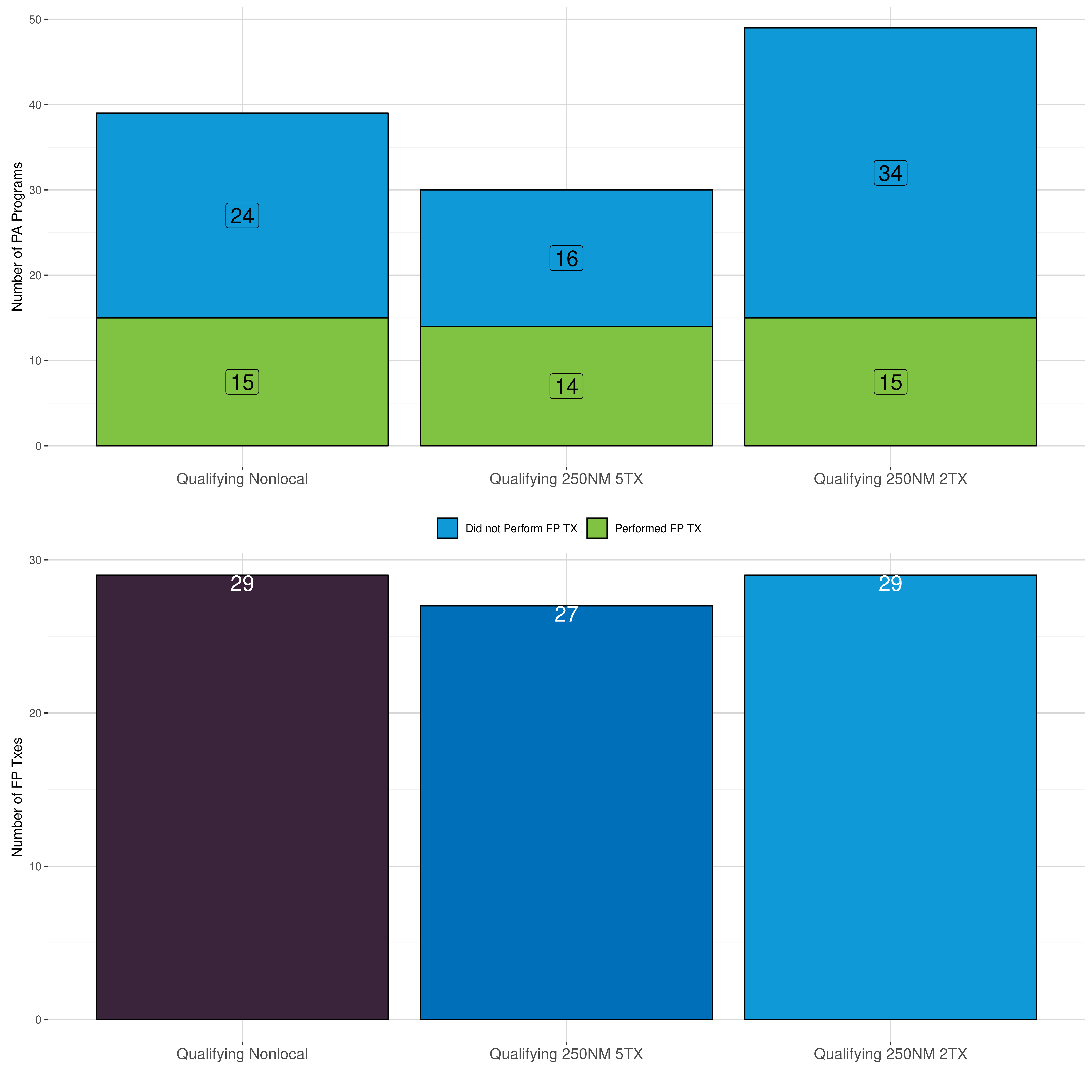Implications for Facilitated Pancreas Transplant Allocation with the Removal of Donor Service Area
1Vanderbilt University Medical Center, Nashville, TN, 2United Network for Organ Sharing, Richmond, VA, 3University of Wisconsin, Madison, WI, 4University of Maryland, Baltimore, MD
Meeting: 2020 American Transplant Congress
Abstract number: C-258
Keywords: Allocation, Kidney/pancreas transplantation, Pancreas, Pancreas transplantation
Session Information
Session Name: Poster Session C: Non-Organ Specific: Public Policy & Allocation
Session Type: Poster Session
Date: Saturday, May 30, 2020
Session Time: 3:15pm-4:00pm
 Presentation Time: 3:30pm-4:00pm
Presentation Time: 3:30pm-4:00pm
Location: Virtual
*Purpose: Facilitated Pancreas (FP) Allocation, modified in August 2016 to be metric-based rather than opt-in, defines an eligible center as one that has transplanted at least 5 imported pancreata in the prior 2 years. Organ procurement organizations can utilize this shortened list within 3 hours of pancreas procurement and after local offers to candidates have been exhausted to improve efficient placement and utilization of pancreata. With ongoing efforts to remove donor service area (DSA) to comply with the Federal Final Rule that applies to the Organ Procurement and Transplantation Network and Scientific Registry (42 C.F.R. § 121), we sought to evaluate the historical use of facilitated pancreas placement to better understand future policy implications with a 250 NM circle.
*Methods: Two-year post implementation data from the United Network for Organ Sharing were analyzed to assess the impact of qualifying for FP offers in transplanting pancreata from deceased donors recovered from donor hospitals more than 250 NM away.
*Results: In the 2 years post-implementation of FP, 39 centers qualified with 29 pancreas transplants occurring by 15 of the qualifying centers. If the number of qualifying transplants remains at 5 per 2 years outside of a 250 NM circle, the number of centers that qualify decreases to 30 with 14 centers performing 27 transplants via FP allocation. If the number of pancreata imported to qualify in 2 years is reduced to 2 outside of the 250 NM radius circle, the number of transplants occurring remains at 29 with 15 of 49 qualifying centers performing them (Figure 1).
*Conclusions: In order to preserve efficiency while maximizing pancreas transplants under broadened allocation, FP may be relied upon less as qualifying programs may have more access to these donors and lowering the threshold may allow smaller volume programs to participate in this expedited placement. These data suggest it is reasonable to reduce the qualifying pancreata for FP from 5 outside of the DSA in 2 years to 2 outside of a 250 NM radius circle in 2 years which may allow for increased center involvement.
To cite this abstract in AMA style:
Forbes R, Urban R, Fox A, Odorico J, Niederhaus S. Implications for Facilitated Pancreas Transplant Allocation with the Removal of Donor Service Area [abstract]. Am J Transplant. 2020; 20 (suppl 3). https://atcmeetingabstracts.com/abstract/implications-for-facilitated-pancreas-transplant-allocation-with-the-removal-of-donor-service-area/. Accessed December 24, 2025.« Back to 2020 American Transplant Congress

